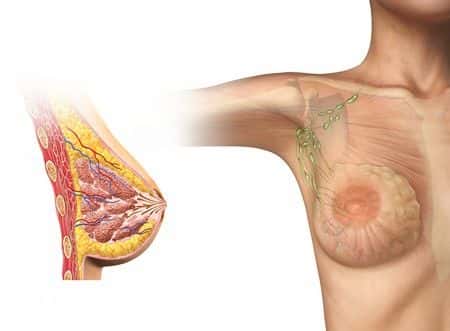Failed Breast Augmentation Procedure Requires Numerous Corrective Surgeries
Updated on
This case takes place in Vermont and involves a 50-year-old female who underwent breast augmentation. The patient presented to the defending facility with complaints of ptosis of the breasts. The defending surgeon, an Emergency Room physician, recommended liposuction of the upper and lower flanks with subsequent fat transfer to the upper and lower portions of the breasts, bilaterally. His office notes make no reference to patient evaluation, discussion of risk analysis including positive family history of breast cancer, nor did the doctor document the patient’s complaints or symptoms. At the patient’s first post-operative visit, the doctor noted skin sloughing and serosanguinous drainage from the breasts. A week later, the patient was seen by the doctor in regards to increasing pain. During the second visit, the doctor noted eschar with surrounding redness on the inferior aspect of the right breast. The patient underwent debridement of both breasts a week later. The pain and distress, along with the unsettling appearance of her breasts, escalated and she no longer felt that she could place trust in the doctor or the facility. The patient sought a second opinion from a plastic surgeon who examined the patient and noted full thickness loss and loss of tissue viability; in essence, the tissue of the lower breasts had died. The areas of dead tissue measured more than 6 cm on the right breast and 5 cm on the left breast. The patient followed up on several occasions with the plastic surgeon, and it has been determined that additional surgery was necessary to revise scarring and to treat grade III breast ptosis bilaterally. The plastic surgeon notes that, after the surgery, he has deemed additional debridement may be necessary and permanent scarring is likely. The plaintiff notes the initial operative report is suspicious due to the amount of total infusion versus total amount of fat harvested. The plaintiff alleges the defendant should have realized that the patient was not a good candidate for fat transfer and that fat transfer alone is below the standard of care for treating grade III breast ptosis. Additionally, the plaintiff alleges the doctor was not qualified to perform the fat transfer procedure and was errant in his technique.
Question(s) For Expert Witness
1. Do you routinely treat patients similar to the one described in the case?
2. What is the standard workup when presented with a patient with complaints of ptosis of the breasts?
3. Please discuss your background in performing this type of procedure. Based on the brief case summary, can you determine if she was a good candidate for the procedure?
4. Have you ever had a patient develop the outcome described in the case? If so, please explain.
5. Do you believe this patient may have had a better outcome if the care rendered had been different?
Expert Witness Response
 The standard work up for patients presenting with complaints of ptosis of the breast is as follows: Measurement of ptosis, digital photography, assessment of skin envelope, history of breast disease/imaging/cancer/other lesions, medical history, smoking history. Goals in terms of nipple position, volume, scar location, type of implant versus autologous fat. I am a board-certified plastic surgeon, Director of Breast Reconstruction and Cosmetic Surgery as well as the fellowship director of a major university medical center. I am the principle investigator of a multi center trial sponsored by American Society of Plastic Surgeons to look at "cancer recurrence after fat transfer." Fat grafting for correction of ptosis is a relatively new technique for correction of breast contour and shape deformities. It is impossible without photos to know for sure, but typically a mastopexy of some type is more commonly used in this application. Risks like fat necrosis, altered mammography, incomplete graft take, and possible injury to implant or need for revision should be discussed. I have never had a patient develop this outcome where the breast needed to be debrided. I believe that it is very likely that this patient could have had a better outcome if the care rendered had been different. I have served on cases where there was tissue loss after breast reduction.
The standard work up for patients presenting with complaints of ptosis of the breast is as follows: Measurement of ptosis, digital photography, assessment of skin envelope, history of breast disease/imaging/cancer/other lesions, medical history, smoking history. Goals in terms of nipple position, volume, scar location, type of implant versus autologous fat. I am a board-certified plastic surgeon, Director of Breast Reconstruction and Cosmetic Surgery as well as the fellowship director of a major university medical center. I am the principle investigator of a multi center trial sponsored by American Society of Plastic Surgeons to look at "cancer recurrence after fat transfer." Fat grafting for correction of ptosis is a relatively new technique for correction of breast contour and shape deformities. It is impossible without photos to know for sure, but typically a mastopexy of some type is more commonly used in this application. Risks like fat necrosis, altered mammography, incomplete graft take, and possible injury to implant or need for revision should be discussed. I have never had a patient develop this outcome where the breast needed to be debrided. I believe that it is very likely that this patient could have had a better outcome if the care rendered had been different. I have served on cases where there was tissue loss after breast reduction.
Subscribe to our newsletter
Join our newsletter to stay up to date on legal news, insights and product updates from Expert Institute.
Sign up nowFind an expert witness near you
What State is your case in?
Subscribe to our newsletter
Join our newsletter to stay up to date on legal news, insights and product updates from Expert Institute.


